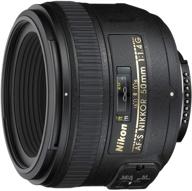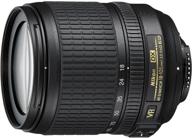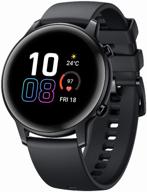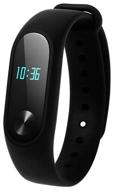
Review on 📷 Tamron 70-180mm F/2.8 Di III VXD Lens for Sony Full Frame/APS-C E-Mount, Black by Darius Permada Buana ᠌

The perfect purchase for me, exactly what I was looking for!
I take my camera on bike trips, so the allowable weight and size of photographic equipment is limited. Previously, I shot with 70-300mm lenses (Sigma and Tamron), but due to their low aperture, they were not well suited for portraits, shooting indoors and at dusk. On Sony I shot at 24-240 - it had the same problem, and the quality did not live up to. Tamron 70-180 solves all these problems. It is both very high quality (not inferior to the fixes I have), and fast (great for portraits and shooting in low light), and quite light + compact (you can shoot with one hand, easy to carry and carry with you without a photo backpack). Autofocus is very fast and tenacious on the A7III, worse on the A6500. Even if the lens itself is a bit short for a telephoto, you can put it on a cropped camera and get the equivalent of a 105-270 / 4 lens. The ability to shoot macro 0.5x is actively used by me - the quality is good (if the main object is in the center of the frame), the focusing distance is large enough not to obscure the object. Tamron did not actively promote this feature, but the lens deserves the Macro prefix or at least Close Focus. Of course, you have to pay for everything - the lack of an optical stabilizer is most obvious. In my test, the efficiency of the Sony A7III in-camera stabilizer with this lens is 2-3 EV. But on the Sony A6500, the stabilizer efficiency was only 1 EV according to my measurements, and this is bad - already at 1/250 s there is a noticeable risk of blurring. The lack of buttons on the lens and simple plastic are typical for amateur Tamrons, Sony for 90K look better. I think that 70-180 is worth the money, especially when the roughness with the firmware is finally solved (for the A7III you can take it now, everything seems to be fine there). There is simply no other such lens for Sony (and indeed any other full-frame system). The lens is ideal for portraits and sports. Very good for landscapes. Good for macro. However, if you don't have IBIS in your camera, then you need something else.
- - Excellent image quality. In comparative tests, this lens is not inferior to the Sony 70-200GM - and outperforms the 70-200G. Sharpness is enough with the head to allow a 24 MP cropped sensor, and there is nothing to say about a full-frame 24 MP. Vignetting and distortion within the norm. - Small weight. Historically, fast aperture optics 70-200 mm weighed around 1.5 kg and had a length well over 200 mm. I had to choose: either we sacrifice aperture and take 70-200 f / 4, or we have a lens that requires a completely different level of involvement (i. E. huge and terribly heavy). Tamron 70-180 managed to combine the advantages of both. At the same time, the length came out even a few centimeters less than that of the 70-200 / 4G, and the light filter was 67 mm versus 72 mm. - Very fast and generally silent autofocus. From that series when you simply don’t notice the work of autofocus. On the A7III it's perfect, on the A6500 it's worse, but also good. - Great for portraits. The lens gives a very soft (for zoom) blur and for an amateur it will easily replace any portrait telephoto lens (85, 135, 200 mm). Of course, portrait fixes give the best quality, but they lose a lot in versatility. - Appearance that does not attract attention. The lens looks like an amateur 70-300. Unlike long white “trunks”, shooting at 70-180 does not cause unnecessary interest among others compared to any other optics. - Macro mode 0.5x (only at 70 mm and in manual focus mode). An interesting feature of the lens, which makes it possible to shoot various small objects. It requires your subject (which will be in focus) to be in the center of the frame, as the periphery will be heavily blurred. But as long as the depth of field in macro is only a few millimeters, this does not cause problems. - Easy, smooth and short zoom stroke. Although the zoom has a retractable trunk, it is implemented well. - Some kind of moisture protection. - Firmware V2 solved the problem with poor performance of IBIS at 70mm: https://www. Youtube. Com/watch?v=ELIo_3x8_2w
- - No stabilization - not suitable for cameras without matrix stabilizer. You just can't get the full benefit of a lens without IBIS or a tripod - you'll have to shoot at 1/800s crop and 1/500s full frame to ensure your photos (including landscapes) are as sharp as possible. - Limited compatibility with Sony A6500 (at least). Firstly, I measured IBIS efficiency at 180mm was only 1 stop, compared to 3 stops for the Sony A7III. Second, every few dozen shots, the lens “resets” and the camera displays “F-” for half a second. - The first lens I bought continuously made a barely audible rustling sound. It was heard either in absolute silence, or if you put your ear to the lens. I turned to the service, sent it to Hong Kong by courier at their expense, a new lens arrived back. - With sharp jumps in focus, as well as with fast zooming, the mechanic makes characteristic sounds, which in some cases can get on the video. - Minimalistic plastic case with a single switch - a zoom lock (it can be useful).
New products
Comments (2)


Top products in 👓 Lenses

Canon EF 40mm f/2.8 STM Lens - Fixed Black (6310B002) for US Cameras

76 Review

📷 Nikon AF-S NIKKOR 50mm f/1.4G Lens with Auto Focus: Perfect for Nikon DSLR Cameras

76 Review

Canon EF 50mm f/1.8 II Fixed Lens - Discontinued by Manufacturer

93 Review

New Nikon 18-105mm Vibration Reduction 📷 Zoom Lens with Auto Focus for Nikon DSLRs

104 Review






